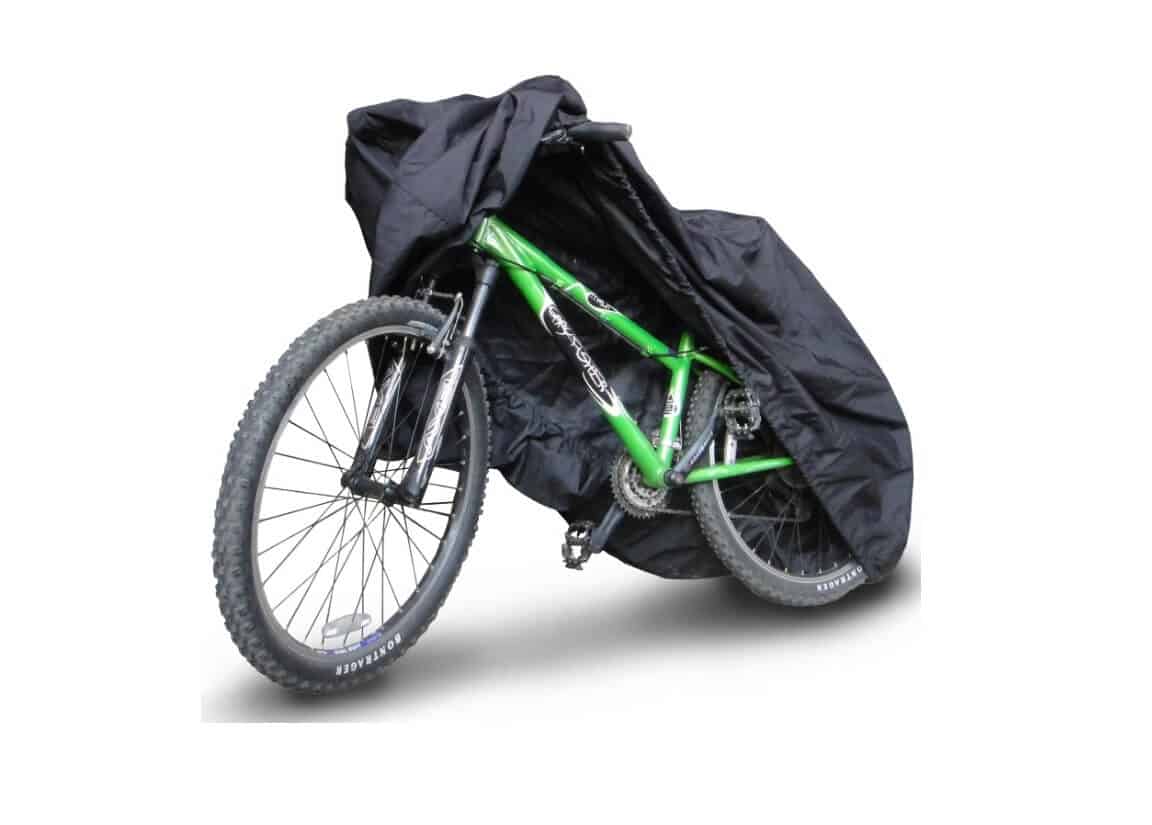A bike cover offers easy protection. It is an important investment if you own or ride a bike considering that you have spent a lot of money purchasing the bike, and you don't want to dispose of it prematurely. A quality waterproof bicycle cover can shield your bike from elements, ensuring it lasts longer. Ideally, if you aren't using your bike, you want to keep it indoors, but then, even when storing the bike, you also want to ensure it is covered to prevent dust and other elements from taking their toll on it.
Of course, there are times when you will have the bicycle stored for a couple of months, especially during the winter. During this time, you want to get protective bike covers that can adequately shield the bike from dust and other elements found indoors.
Leaving your bike exposed to the elements is going to speed up its aging process. Things like water, dirt, and the sun can cause damage to the bike, costing you a lot of money in repairs. If you reside in an area with a humid climate, you want to be aware of rust - it can cause damage to certain metal components, especially those that aren't rust-resistant. In this guide, we look at why you need a bike cover, tips for buying your bicycle cover, how to use or install the covers, and how to take care of it.
Table Of Contents
Best Bike Cover Comparisons
Brand | Features |
|---|---|
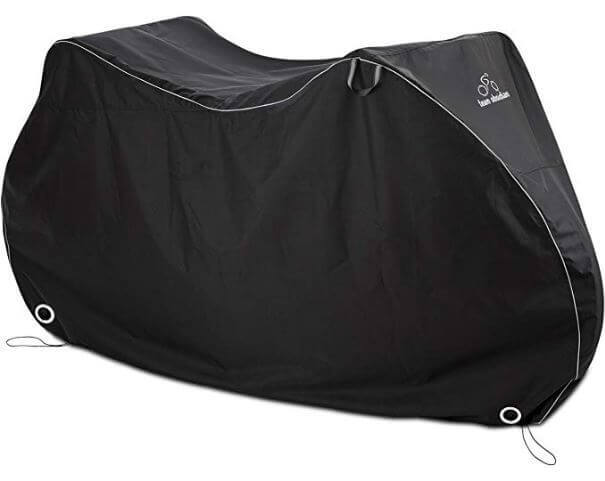 Team Obsidian - Waterproof Outdoor Bicycle Storage | |
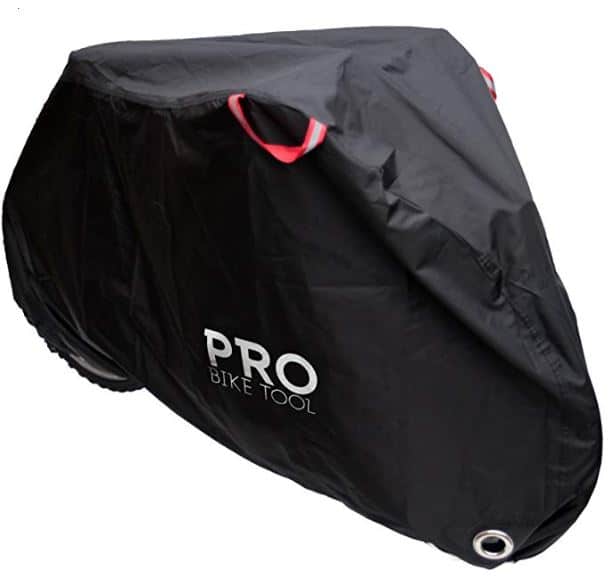 Pro Bike Cover for Outdoor Bicycle Storage | |
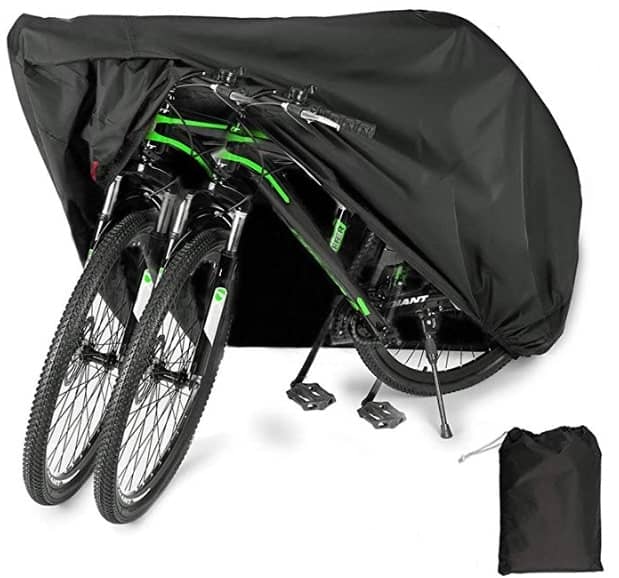 EUGO Bike Cover | |
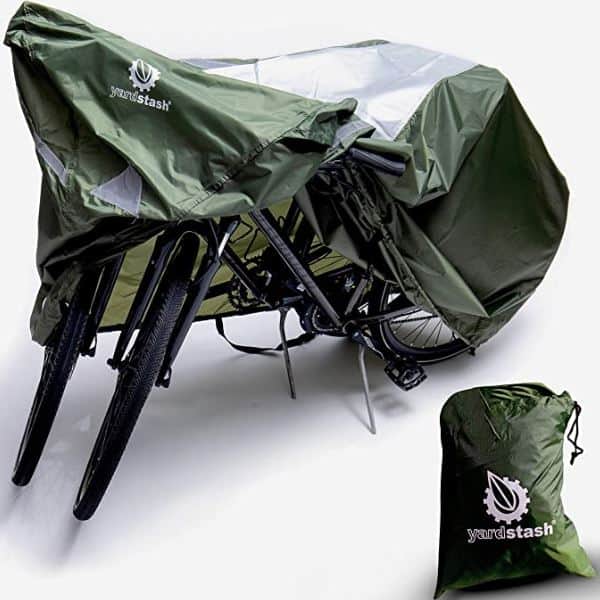 YardStash Waterproof Bike Cover | Outdoor Bicycle Storage | |
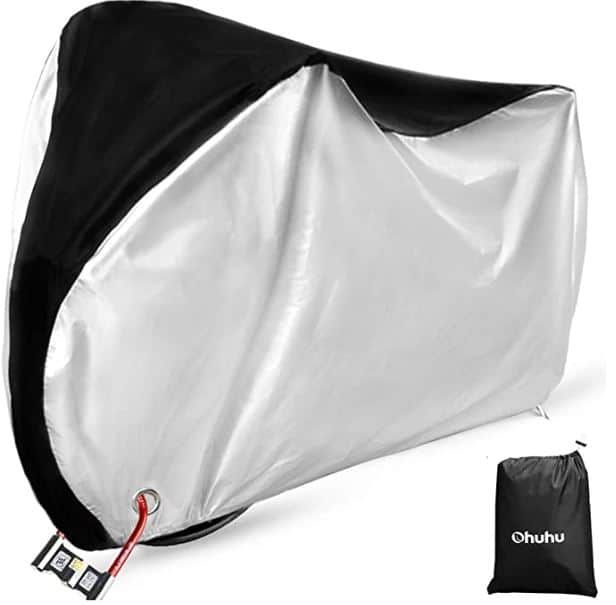 Ohuhu Bike Cover Waterproof Outdoor Bicycle Cover |
Why You Need a Bike Cover?
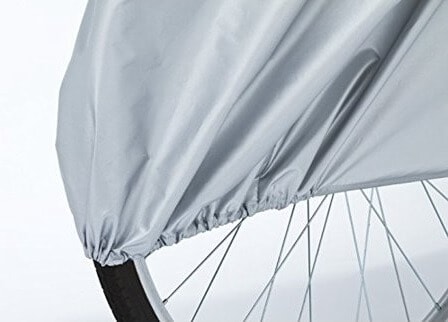
The reason you need a bike cover is to protect your bicycle in the first place. When you buy a bike, you will be riding it, and when you aren't using it, you will store the bike. A bicycle cover can be used when the bike is in storage and when it's outside. You want to park the bike somewhere safe and cover it.
When you get home, you place it in the garage and again cover it. The cover protects the bike from things like dust that can accumulate in various parts, causing problems. The bike covers also protect it from rainwater or even sunlight when outdoors. It's not likely that you will always find a shaded area where you can park your two-wheeler, so you need to carry with you the cover.
When bikes are left outdoors, the tires and tubes may start to crack, meaning they pop easier after applying pressure or when you take the bike for a ride. Covering it protects the bike against sunlight that could cause cracking of tubes. Hot climates may also cause parts and components of the bicycles made of rubber or plastic to be brittle, such as bike water bottle holders. Also, exposure of the bike to the sun can make colors on the seat, tires, frame, pedals, and other surfaces fade.
What Happens When You Don’t Cover Your Bike?
When you don't cover your bike with a bicycle cover, you will be risking parting with it sooner. A bicycle is a significant investment. It gives you a comfortable ride, takes you to places, and offers you transport when you want to go to the grocery. It's also a great tool for exercising the body. With all these benefits and the cost you have incurred when purchasing it, you don't want to let it get damaged by elements that you can shield it from.
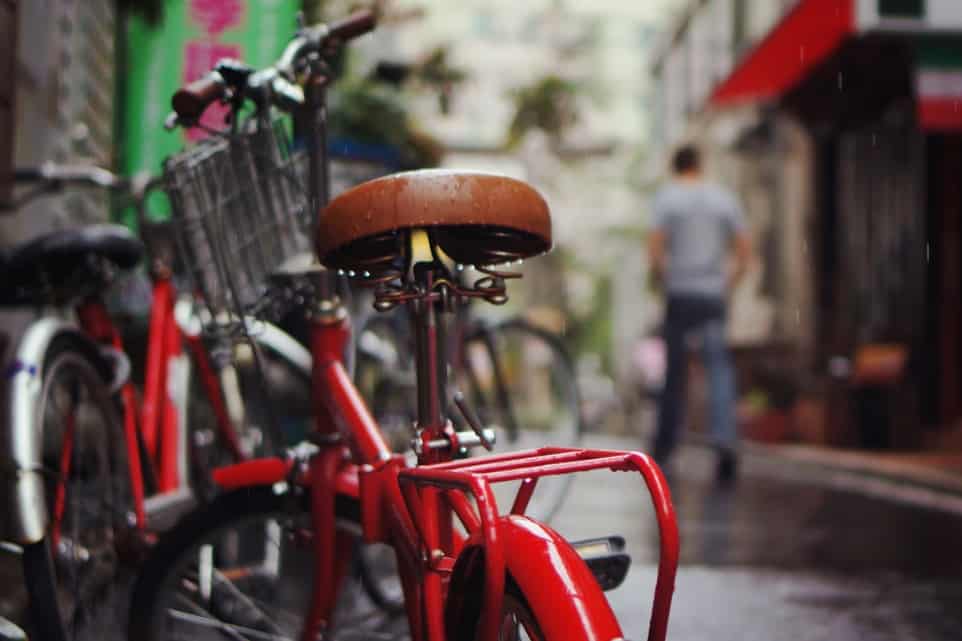
Leaving your bicycle exposed to weather elements accelerates wear and tear. Parts begin to rust and become less reliable, which puts you in danger of causing accidents. An outdoor cover is crucial if you want to ride safely.
Bike owners often spend a lot of money on repairs when they don't cover their bikes. That is money they could have saved by simply buying bicycle covers and covering the bike. A word of caution is that when you have been out riding before you store your bike and cover it, you can give it a simple cleanup, just in case, to remove any loose dirt, grime, or even moisture so that when you cover it, those elements won't stick on the parts, surfaces, or components of the bike. It will also make it easier for you when you eventually do a thorough cleanup. And you know what? Moisture and dust can be a recipe for sludge, which contributes to metal part rusting.
How to Care for Your Bike Cover
If you have a bike, you will need to care for it and the accessories it uses, like covers. For example, the seat cover goes over the bicycle saddle, and the helmet cover protects the helmet. When using the covers, you need to know how you can install them properly. For instance, if it's the seat cover for protection against dirt, you should know how to fit it.
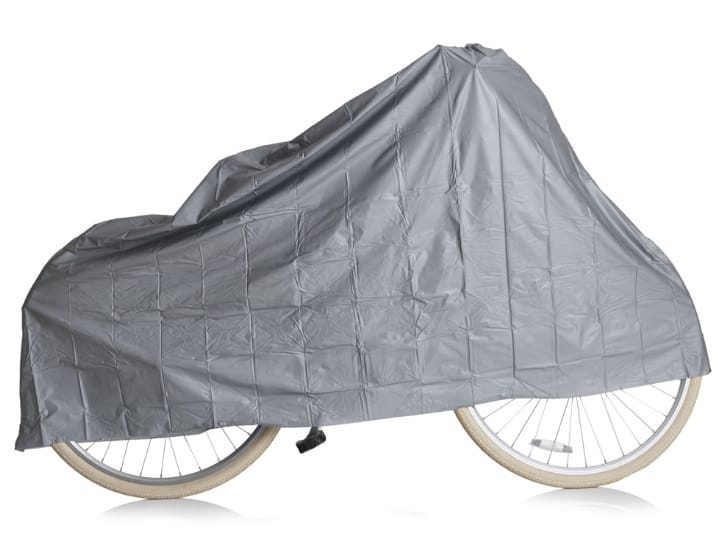
So, how do you go about installing a dirt bike seat cover?
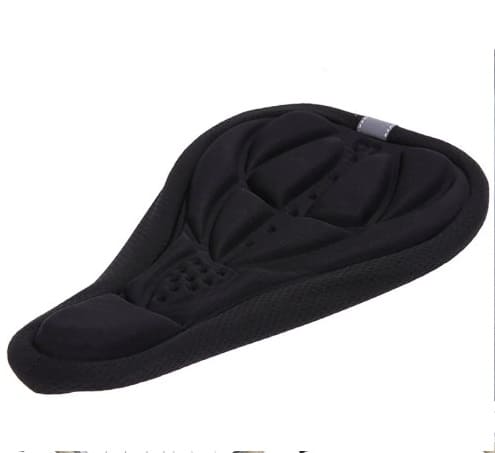
Installing or replacing a dirt bicycle seat cover is not difficult, provided you have the tools. To install the cover, you will need a set of pliers, staples, a Stanley knife, a large flat-blade screwdriver, a t-bar set, and a heavy-duty/air spring-loaded staple gun. When installing the dirt seat cover, you need to remove the seat and flip it over to see where the staples are located- usually the bottom area.
Use the screwdriver to remove the staples. For the staples proving tricky to remove, use the pliers to pull them out. After removing the old cover, get the new one and check the ends to see the front and back. Start by pulling your cover over the front end and doing the same over the back end of the bike seat. Try to pull over both ends to ensure you have a smooth, wrinkle-free finish.
Use the staple gun to apply stables. Start by punching one to the front and then another to the rear. Make sure you fire the staples properly to avoid damaging the seat. After that, work from the front, punching the staples as you move to the back end. Ensure you add the staples to each side as you move the way down to the rear end. Ensure the cover is straight and that it's a snug fit to the base of the bike saddle. Now, you are done with the installation of the bike seat cover.
If you are riding off-road during the rainy season, you want to ensure that the spokes of your bike are protected. Using bike spoke wraps, you can help protect the spokes from dirt and ensure they don't vibrate when riding. To help cover the spokes, you want to purchase the spoke wraps and then wrap them around the spokes as instructed. You may need to trim them so that they fit incorrectly.
When you want to transport your bike, you can fold it up in a bike cover. The folding bike racks or covers are designed to ensure that the bicycle slips in easily, and then you tie the cover around the saddle. The cover may have the saddle exposed to serve as the handle for handling the bike. Using the folding bike rack allows you to transport your bike without bothering other people. It is easy to use and allows the bike to fit inside without causing damage to the cover. When placing the bike in the folding cover, you start by the rear side and then the front end before you pull up the cover to tie it around the neck of the saddle.
Another thing you need to protect is your helmet. A bike helmet cover allows you to keep the helmet free of dust, moisture and protect it from sunlight. If you don't have a helmet cover, you can purchase one or even sew it yourself. You need many accessories for your bicycle, and perhaps, you don't have to get to the bicycle store every time you want an accessory. You just need to have the tools and items needed to make them.
For example, the helmet cover can be custom-made at home using fabric material like muslin or scrap fabric. To make the helmet cover, you need to get a thin plastic bag like a dry cleaning bag. Tightly wrap the helmet in packing tape. After you have covered the helmet, make guide marks. Also, mark any special features like ventilation holes. After marking, cut along the mark. Also, cut the pattern pieces so that you use them to cut the fabric. When you have cut the pieces, now use them to trace on paper. Ensure you leave enough space for seams during stitching in each piece. Use the pieces of paper to cut the patterns out of your fabric. Now use the fabric pieces to sew up your helmet.
When you have used the bike covers, brush out dust, water, and other debris and store them safely.
How to Clean Your Bike Cover
Your bicycle cover will get dirty with dirt, dust, oil, or even bird droppings. A dirty cover will also mean your bike gets dirty. It doesn't make sense when you wash and wax your bike then cover it with a dirty cover. Cleaning a bike cover depends on the materials used to make the cover. There are different materials you find in the market, including nylon and polyester materials.
In cleaning the bicycle cover, you will prepare it first. Some covers have instructions from the manufacturer, but these techniques work with most covers.

The safest way of cleaning bike covers is by hand, though some can be washed in washing machines. When cleaning the covers, wear an apron or something that you don't mind if it gets messy or stained. Get cold and hot water in plenty.
Pour a mild washing powder directly into stain spots so that you remove them before you clean the entire piece. Allow the detergent to soak for a few minutes. Fill a bucket or sink with warm water and add more detergent. Dip the cover in soapy water, then gently wash the cover. Rinse your cover and air-dry it. Ensure there aren't suds left on the cover after you rinse it because it can damage the material.
Tips for Buying a Bike Cover
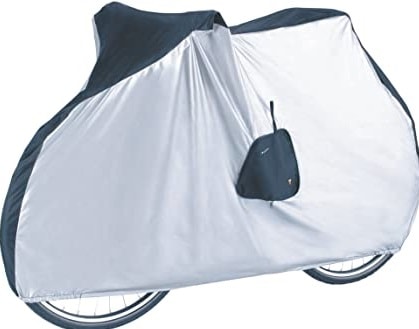
In selecting a bike cover, you need to consider its use. A full bike cover protects the entire bike during indoor storage or when it's outdoors. For instance, in winter, you will most likely not use your bicycle (unless it's a fat bike). For winter bike storage, you want a cover designed for indoor bicycle storage. You may also want to have a cover that protects the chain gear and wheels. These covers become handy when the two-wheeler is being transported or is indoors. A waterproof seat cover helps shield the bike's saddle from rainwater, thus keeping it dry.
A full bicycle cover made of windproof, waterproof, and UV protection material allows thorough protection from damaging elements. If you want a cover for indoor storage, make sure it protects the bike pedals, chain, and wheels, but keeps the seat and handlebar uncovered. Waterproof outdoor bike covers are meant to help with weather protection. In contrast, the indoor bicycle covers help protect the bike and its accessories from scratches, dust, and damages when transported or when in storage under the shade, garage, or house.
Things to Look for When Selecting Bike Covers
The most important consideration is the material of the bicycle cover. A thick polyester material of about 600D (D- standing for denier) could be the best bet, but it's rare. This kind of material is thick enough to endure for a long while, not being able to tear off easily when taking it on or fitting it over the bike. Most of the materials you will find are 400D and 240D, meaning they may not last as long as the 600D. The reason why the bike seat manufacturers don't want to use heavy-duty material is because of the cost implication. Nonetheless, you could still find these materials but at a much higher cost.
The cover should also be large enough to be able to cover the bike. When buying the cover, make sure it is large or XL because the smaller or regular sizes wouldn't entirely cover the bike. An XL cover will also ensure that two bikes can be covered together if the need arises, or you can use it to cover a beach cruiser bike or a recumbent bike. You may want to look for bicycle covers measuring 82 L x 44 H x 30 W or something like that instead of the regular 78″ x 30″ x 40″. Find the correct cover material size by measuring from the ground to the tallest part of your bicycle (usually the handlebars). The width may differ from model to model, while the length is measured from the front tire's tip to the back tire's tip. But the most important thing is to ensure you get a size that is larger than the measurements.
Also, get a cover that has some reflective materials. It helps when you park the two-wheeler at night or when on the road transporting it.
Again, consider a cover with some closure system within the bottom area like tie straps, buttons, or a zipper. It will help prevent dust and debris from blowing up into the gear, cables, chains, and other parts. When dust gets into these parts, it affects its performance or even makes it deteriorate. Another thing to look at is the UPF rating. This tells you how effective the cover material is at shielding the bike from harmful UV light. Ensure you check the specifications to see that you have a material that is tear-resistant, puncture-resistant, and waterproof. The covers should also have lock holes so that you can be able to lock the bikes for security reasons when you park them. You don't want to leave your bicycle unsecured with a lock because you may not know what could happen. A bicycle cover that does not have lock holes and accessibility can be inconvenient, especially when you want to secure the bike safely in the parking area or shade.
Where to Buy a Bike Cover
There are many places to purchase the covers. It would be wise to buy a cover while buying a bike, to ensure you get the correct size. In most cases, you will be ordering them online, or you may visit a brick-and-mortar store. Whichever the case, you need to know what you want. Amazon is a good bet when you want to purchase the covers. When buying from Amazon, you want to seek bike covers for sale online. You may find some are made of nylon; however, you would better prefer polyester fabric.
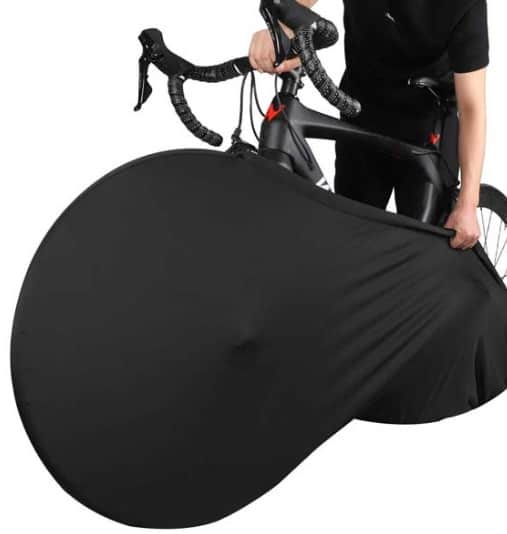
A cover made from high-quality polyester taffeta, for instance, is an ideal choice. The cover should have a protective material that has a smooth feel. The polyester material is waterproof, tear-resistant, durable, and protects the bicycle against dust, scratches, UV light, rain, and snow.
Conclusion
These are some of the things you want to know about bike covers. It will last longer with a quality bicycle cover and proper care and ensure your bike endures for long. It will keep the bike in good shape while reducing maintenance and repair costs.

